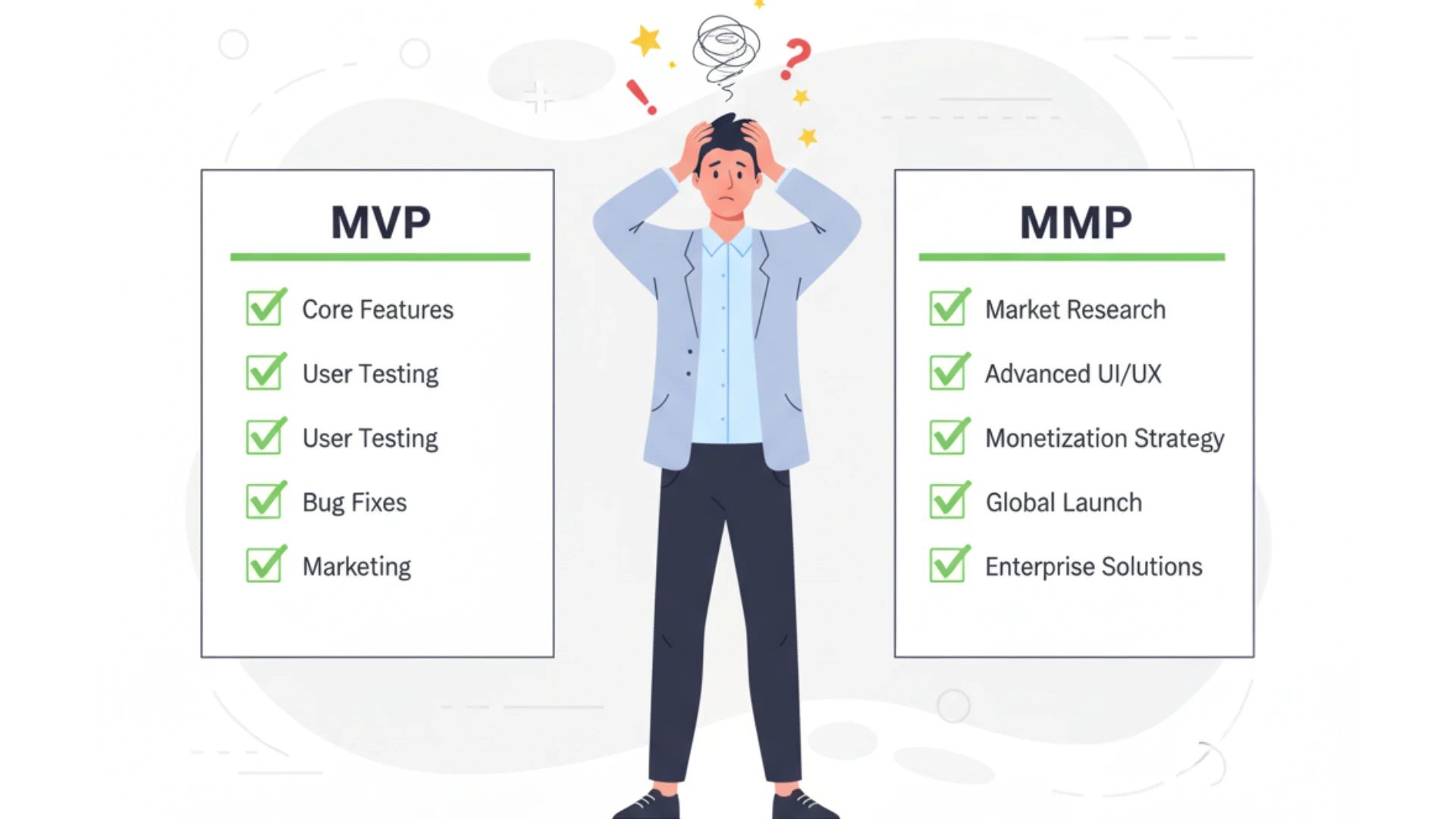Every post, review, or tweet carries an opinion, and those opinions shape brands. That’s where sentiment analysis using NLP becomes crucial. By analyzing how customers truly feel, businesses move beyond surface-level data to uncover the emotions driving loyalty or frustration.
With NLP sentiment analysis, companies can monitor reputation, predict risks, and identify growth opportunities before competitors do.
The stakes are high: ignore customer sentiment, and a single overlooked trend could snowball into a crisis. Embrace it, and you gain real-time intelligence that powers smarter decisions across marketing, product development, and customer experience.
In this blog, we’ll uncover why brands can’t afford to overlook sentiment analysis, the hidden costs of neglect, and the competitive advantages of adopting NLP-powered solutions.
The Current State of Brand Sentiment: What’s Happening?
Sentiment analysis using NLP has become a cornerstone of modern brand strategy. Companies can no longer rely on traditional metrics like sales or survey scores alone, as understanding real-time customer emotions has become essential.
With opinions shared across social media, reviews, emails, and forums at lightning speed, brands must interpret sentiment quickly to protect loyalty and reputation.
Customer feedback is now both massive in volume and highly influential: a single negative trend can spread widely before teams even notice it.
At the same time, positive sentiment can amplify advocacy if recognized and acted upon. In this fast-moving environment, brands that fail to monitor sentiment risk missing key insights, losing competitive advantage, and letting small issues escalate into larger crises.
This context highlights why modern companies are turning to NLP-powered solutions for brand sentiment monitoring, enabling them to capture, analyze, and act on emotions in real time.
How customer expectations have evolved in the digital age
Customer expectations are no longer limited to quality products. In fact, they now include instant communication, empathy, and transparency.
Research from PwC reveals that 73% of customers say experience impacts buying decisions in 2025. As a result, this shows how people value interactions and service quality just as much as product performance.
Let’s break down the key shifts shaping this digital-first environment:
- Firstly, customers expect real-time interactions through tools like AI chatbot customer support automation.
- Subsequently, transparency in pricing and values influences long-term trust more than advertising campaigns.
- Personalization drives retention, with buyers expecting tailored recommendations every time.
- Social media responses impact reputation, as silence is often seen as negligence.
These evolving expectations highlight why sentiment analysis using NLP for brands has become vital for lasting engagement. Brands that adapt eventually build customer trust, strengthen loyalty, and protect their reputation in a highly competitive digital ecosystem.
The volume and velocity of customer feedback today
Feedback today is constant, fast, and multi-channeled. From tweets to review platforms, customers continuously share opinions.
According to Forbes, up to 98% of consumers read reviews before making a purchase. This shows how online sentiment has become a deciding factor in buyer journeys. Reviews are powerful signals shaping purchasing confidence and brand trust.
Brands face thousands of mentions daily, making manual monitoring nearly impossible. Here is where brand sentiment monitoring AI becomes critical.
By processing vast data streams in real-time, it enables companies to spot risks and seize opportunities faster than ever before.
The Hidden Costs of Ignoring Customer Sentiment
Feedback provides early warning signals and valuable insights. Subsequently, ignoring sentiment analysis using NLP can create serious long-term consequences for brands.
Understanding these costs helps businesses prioritize monitoring, prevent crises, and improve customer relationships.
Now, let’s examine the key risks.
Brand reputation damage and crisis escalation
Failing to track negative sentiment can quickly harm a brand’s public image. Further, a single viral complaint can escalate into a larger crisis. Sentiment analysis using NLP allows companies to detect early warning signs before they worsen.
Additionally, leveraging AI chatbot benefits, including sentiment analysis, helps respond to customers instantly and protect their reputation.
Without timely insights, brands risk losing credibility, media attention, and customer confidence. Hence, prompt monitoring prevents smaller issues from snowballing into full-scale crises.
Lost revenue from unaddressed customer concerns
Unresolved complaints directly affect sales and profitability. Subsequently, customers who feel ignored often abandon purchases or switch to competitors.
Using customer sentiment analysis tools, companies identify pain points early. Further, sentiment analysis using NLP guides corrective actions, recovering lost opportunities, and boosting satisfaction.
Competitive disadvantage from missed market insights
Brands that overlook feedback fail to recognize trends or evolving preferences. Consequently, competitors gain an edge by responding faster to changing demands.
With sentiment analysis using NLP, companies uncover market shifts before others do. Ignoring feedback and trends leads to stagnation, slower innovation, and diminished market share. Subsequently, active monitoring strengthens competitiveness and foresight.
Customer churn and lifetime value erosion
Repeated negative experiences reduce loyalty and shorten customer relationships. Further, high churn directly impacts long-term profitability and brand growth. Sentiment analysis using NLP helps identify dissatisfied customers early.
Moreover, customer sentiment analysis tools allow brands to intervene, improving retention and overall satisfaction. Addressing sentiment proactively preserves lifetime value, strengthens engagement, and prevents revenue loss caused by avoidable departures.
The Competitive Advantages of NLP-Powered Sentiment Analysis
Harnessing sentiment analysis using NLP gives brands actionable insights to stay ahead. Further, by analyzing emotions and opinions, companies can respond faster, optimize strategies, and protect their reputation.
Let’s explore the key advantages for modern businesses.
Real-time brand monitoring and crisis prevention
With sentiment analysis using NLP, companies can detect emerging issues instantly.
Real-time monitoring identifies negative trends before they escalate. Consequently, leveraging brand sentiment monitoring AI allows immediate intervention. Additionally, alerts and dashboards help marketing teams respond efficiently.
Rapid detection prevents crises, preserves credibility, and strengthens long-term customer trust across digital channels.
Enhanced customer experience through sentiment insights
Analyzing customer sentiment using NLP reveals preferences, pain points, and emotional triggers. As a result, brands gain a deeper understanding of how customers feel.
NLP sentiment analysis for brands supports personalized campaigns, tailored communication, and proactive service. By applying these insights, companies improve satisfaction, foster loyalty, and deliver more meaningful interactions at every touchpoint.
Product development informed by customer feedback
Brands can extract actionable insights from reviews, surveys, and social media by sentiment analysis using NLP.
Moreover, customer feedback helps in informing product improvements and feature prioritization. Through customer sentiment analysis tools, teams identify trends and innovate faster.
This data-driven approach reduces errors and guides design decisions. Ultimately, it ensures that products meet customer expectations, boosting adoption and retention.
Competitive intelligence and market positioning
Leveraging sentiment analysis using NLP helps brands understand competitor perception and market trends. It uncovers unmet customer needs and opportunities for differentiation.
By integrating NLP in marketing activities, businesses can position themselves strategically. Further, insights inform pricing, campaigns, and messaging, giving a measurable edge in highly competitive markets.
Implementation Strategies for Brands
Implementing sentiment analysis using NLP requires careful planning and execution. Hence, brands must evaluate options, set clear metrics, integrate with existing systems, and train teams effectively.
Let’s explore these strategies in detail:
Building vs. buying sentiment analysis solutions
Brands face a choice between developing in-house solutions or purchasing third-party tools. Building offers customization but requires significant resources. On the other hand, buying provides ready-made solutions with faster deployment.
Careful evaluation of costs, scalability, and technical expertise helps determine the best approach. Subsequently, aligning the choice with long-term business goals ensures sustainable and effective sentiment analysis implementation.
Key metrics and KPIs to track
Monitoring the right metrics helps in the effectiveness of sentiment analysis using NLP initiatives.
Important KPIs include sentiment score trends, customer satisfaction ratings, and response times. Implementing AI in business strategy helps in aligning these metrics with overall business goals.
Further, regular analysis of these KPIs can guide improvements and demonstrate the value of sentiment analysis.
Integration with existing marketing and CRM systems
Seamless integration of sentiment analysis using NLP tools with marketing and CRM systems enhances data flow and decision-making. Consequently, it allows for real-time insights and personalized customer interactions.
Utilizing customer sentiment analysis tools facilitates this integration to make sure that the feedback is promptly addressed and strategies are adjusted accordingly.
Team training and organizational adoption
Successful implementation requires training teams to understand and utilize sentiment analysis tools effectively. It also involves fostering a culture that values customer feedback.
Providing training on sentiment analysis using NLP equips teams with the skills needed to interpret and act on insights. Thus, it leads to improved customer engagement and satisfaction.
Overcoming Common Challenges and Limitations
Implementing sentiment analysis using NLP comes with several challenges. Hence, brands must address language nuances, privacy concerns, and maintain accuracy across diverse contexts.
Understanding these limitations helps organizations optimize tools and extract reliable, actionable insights.
These are the common hurdles and their respective solutions:
Handling sarcasm, irony, and cultural nuances
Detecting sarcasm and irony remains difficult for machines, as sentiment analysis using NLP can misinterpret subtle language cues. Cultural context further complicates analysis, as meanings vary globally.
Advanced algorithms and contextual models improve detection accuracy, hence allowing brands to interpret feedback more effectively. As a result, addressing these nuances enhances understanding and prevents misinformed decisions based on false sentiment interpretation.
Managing multilingual sentiment analysis
Global brands receive feedback in multiple languages. Subsequently, tools must process multilingual text accurately to capture meaningful insights.
Additionally, using translation models and language-specific sentiment datasets improves understanding. Companies can interpret global customer opinions without losing context.
Effective strategies for diverse languages enhance decision-making, customer engagement, and insights through sentiment analysis using NLP.
Ensuring data privacy and compliance
Handling customer data responsibly is crucial. Thus, sentiment analysis using NLP must adhere to regulations like GDPR and CCPA.
Companies need secure storage, anonymization, and controlled access to maintain compliance. Subsequently, privacy-conscious practices build customer trust and reduce legal risks.
Failure to comply can result in fines and damage to reputation, making governance essential.
Balancing automation with human oversight
Automated systems accelerate analysis but may miss subtle insights.
Sentiment analysis using NLP should be complemented with human review. Human oversight improves accuracy, validates anomalies, and interprets complex sentiment patterns.
Additionally, collaboration between AI and teams ensures meaningful and actionable insights. This balance empowers organizations to leverage efficiency while maintaining high-quality decision-making across campaigns and feedback analysis.
Future Trends and Emerging Technologies
The future of sentiment analysis using NLP is rapidly evolving. Emerging technologies are expanding their capabilities across diverse channels.
Understanding these trends helps brands stay competitive, leverage new tools, and extract deeper insights from customer feedback.
Let’s explore the key developments shaping the industry.
Multimodal sentiment analysis (text, voice, video)
Multimodal sentiment analysis combines text, voice, and video to capture a complete picture of customer emotions. Subsequently, sentiment analysis using NLP can analyze tone, expressions, and word choice simultaneously.
Incorporating brand sentiment monitoring AI allows brands to understand subtle signals beyond written text. This approach improves accuracy in feedback interpretation and enhances customer experience.
By integrating multiple channels, businesses gain richer insights, detect hidden sentiments, and respond more effectively to customer needs.
Real-time sentiment analysis and automated responses
Real-time analysis enables brands to monitor customer sentiment instantly. Sentiment analysis using NLP detects trends as they emerge, allowing timely interventions.
Additionally, using AI-driven sentiment response systems, companies can automate replies, prioritize urgent issues, and maintain consistent engagement. This reduces response delays and improves satisfaction.
Ultimately, immediate insights help brands act proactively, prevent crises, and optimize interactions for better loyalty and retention.
Advanced emotion detection and psychological insights
Advanced emotion detection goes beyond basic sentiment to understand complex feelings. Further, sentiment analysis using NLP identifies nuanced emotions like frustration, excitement, or empathy.
Moreover, integrating natural language processing marketing allows brands to tailor messaging, campaigns, and experiences according to customer psychology.
Insights guide product decisions and service improvements. By leveraging these insights, companies strengthen engagement, foster loyalty, and create emotionally intelligent customer experiences, enhancing overall brand perception.
Conclusion
Sentiment analysis using NLP offers brands a detailed understanding of customer emotions, feedback trends, and behavioral patterns.
Leveraging customer sentiment analysis tools allows companies to make data-driven decisions, improve customer experience, and identify opportunities for innovation. By systematically analyzing sentiment, brands can prevent crises, reduce churn, and optimize product and marketing strategies.
Partner with American Chase to implement advanced sentiment analysis solutions, transform your customer engagement, and gain a measurable competitive advantage across all channels.
Contact us today.
FAQs
1. What is the difference between sentiment analysis and opinion mining?
Sentiment analysis detects emotions in text, while opinion mining identifies opinions, beliefs, or attitudes. Both extract insights, but opinion mining is more nuanced.
2. How accurate is sentiment analysis using NLP, and what factors affect accuracy?
Accuracy depends on model quality, language complexity, sarcasm, context, and data diversity. Sentiment analysis using NLP models generally achieves 70–90% accuracy in real-world scenarios.
3. What are the main challenges brands face when implementing sentiment analysis?
Challenges include sarcasm detection, multilingual text, cultural nuances, integrating tools with existing systems, and ensuring accurate interpretation of customer sentiment.
4. How much does it cost to implement sentiment analysis for brand monitoring?
Costs vary by solution type. Cloud-based tools start around $500–$2,000 monthly, while enterprise systems can reach $50,000+ annually, depending on scale.
5. Can sentiment analysis handle multiple languages and cultural contexts?
Yes, with multilingual sentiment analysis using NLP models and language-specific datasets. However, accuracy can vary, and cultural context requires advanced modeling for reliable insights.
6. What types of data sources should brands analyze for comprehensive sentiment insights?
Brands should analyze social media, reviews, surveys, emails, chat transcripts, forums, and blogs to capture diverse and comprehensive customer feedback.
7. How quickly can sentiment analysis detect and alert brands to emerging issues?
Real-time sentiment analysis using NLP systems can detect trends or negative sentiment within minutes. This enables immediate alerts and faster response to prevent reputational damage.







